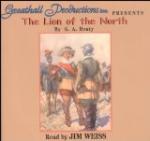Time after time the Austrians attempted to carry the place, and were always hurled back, although outnumbering the Scots by nigh twenty to one. At last the town was in ruins, and was on fire in a score of places. Its streets and lanes were heaped with dead, and it was no longer tenable. Munro therefore gave orders that the houses should everywhere be set on fire, and the troops fall back to the castle.
Steadily and in good order his commands were carried out, and with levelled pikes, still facing the enemy, the troops retired into the castle. The Imperial general, seeing how heavy had been his losses in carrying the open town, shrank from the prospect of assaulting a castle defended by such troops, and when night fell he quietly marched away with the force under his command.
CHAPTER III SIR JOHN HEPBURN
Munro’s first care, when he found that the Imperialists had retreated in the direction of Colberg, was to send out some horsemen to discover whether the Swedes were in a position to cover that town. The men returned in two hours with the report that Field Marshal Horn, with the Swedish troops from Stettin, had joined Kniphausen and Hepburn, and were guarding the passage between the enemy and Colberg.
Two days later a message arrived to the effect that Sir Donald Mackay, who had now been created Lord Reay, had arrived to take the command of his regiment, and that Nigel Graheme’s company was to march and join him; while Munro with the rest of his command was to continue to hold the Castle of Schiefelbrune.
Shortly afterwards General Bauditzen arrived with 4000 men and 18 pieces of cannon to press the siege of Colberg, which was one of the strongest fortresses in North Germany. On the 13th of November the news arrived that Montecuculi was again advancing to raise the siege; and Lord Reay with his half regiment, Hepburn with half his regiment, and a regiment of Swedish infantry marched out to meet him, Kniphausen being in command. They took up a position in a little village a few miles from the town; and here, at four o’clock in the morning, they were attacked by the Imperialists, 7000 strong. The Swedish infantry fled almost without firing a shot, but the Scottish musketeers of Hepburn and Reay stood their ground.
For a time a desperate conflict raged. In the darkness it was utterly impossible to distinguish friend from foe, and numbers on both sides were mown down by the volleys of their own party. In the streets and gardens of the little village men fought desperately with pikes and clubbed muskets. Unable to act in the darkness, and losing many men from the storm of bullets which swept over the village, the Swedish cavalry who had accompanied the column turned and fled; and being unable to resist so vast a superiority of force, Kniphausen gave the word, and the Scotch fell slowly back under cover of the heavy mist which rose with the first breath of day, leaving 500 men, nearly half their force, dead behind them.




